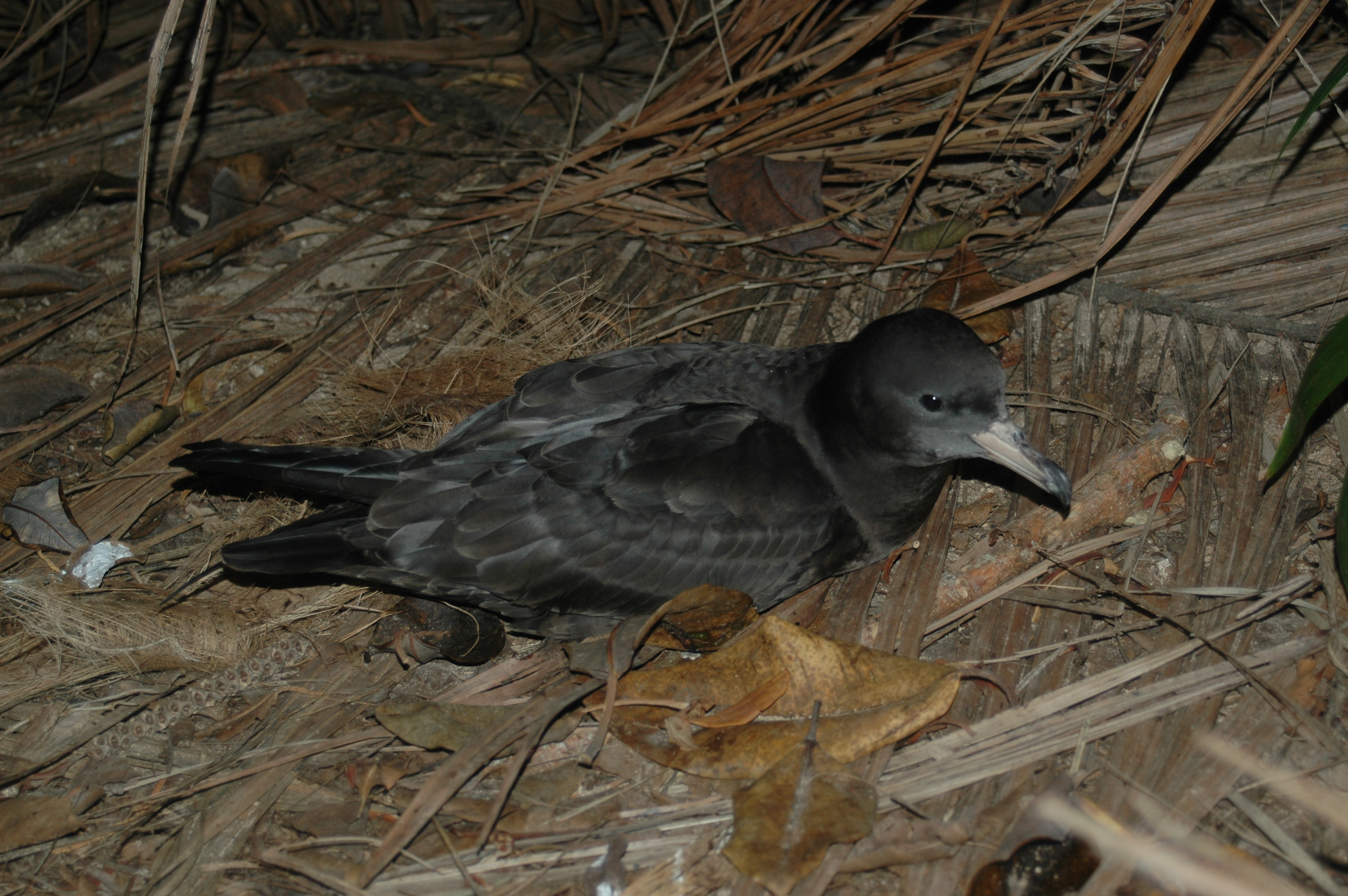
Flesh-footed Shearwater on Lord Howe Island, photograph by Tim Reid
Megan Grant (Institute for Marine and Antarctic Studies, University of Tasmania, Newnham, Australia) and colleagues have published open access in the journal Ecology and Evolution on Near Threatened Flesh-footed or Sable Shearwaters Ardenna carneipes adding nutrients via guano to their breeding sites on Lord Howe Island.
The abstract follows:
“Seabirds are long-range transporters of nutrients, linking their marine feeding grounds with their terrestrial breeding and roosting sites. Seabirds can influence the terrestrial environment in which they reside by depositing nutrient-rich guano, which acts as a natural fertiliser. Here, we determined the nutrient content of Sable Shearwater (Ardenna carneipes) guano and used stable isotope analysis to determine changes in isotope signals and nutrient concentrations through the terrestrial environment across three sites on Lord Howe Island, Australia: active shearwater colony, abandoned shearwater colony and un-colonised area. The concentration of nitrogen in Sable Shearwater guano was like other Procellariiformes, and this was reflected in the palm leaves and invertebrates (slugs) sampled from seabird colonies, which were enriched in δ15N relative to the control site. In contrast, nitrogen stable isotope values in soils were not significantly different among sites, indicating the presence of historic seabird colonies. Guano was rich in phosphorous and potassium, which fertilised soils in the shearwater colony compared to sites without seabirds present. It is expected that the island will experience a reduction in nutrient inputs from guano because the shearwater population is in decline, and this may result in changes to vegetation assemblages in the colonies over time.”
Reference:
Grant, M.L., Reichman, S.Z., Bond, A.L. & Lavers, J.L. 2025. Seabirds enhance primary producer and consumer isotope signals on a sub-tropical island. Ecology and Evolution 15(7) doi.org/10.1002/ece3.71636.

 English
English  Français
Français  Español
Español